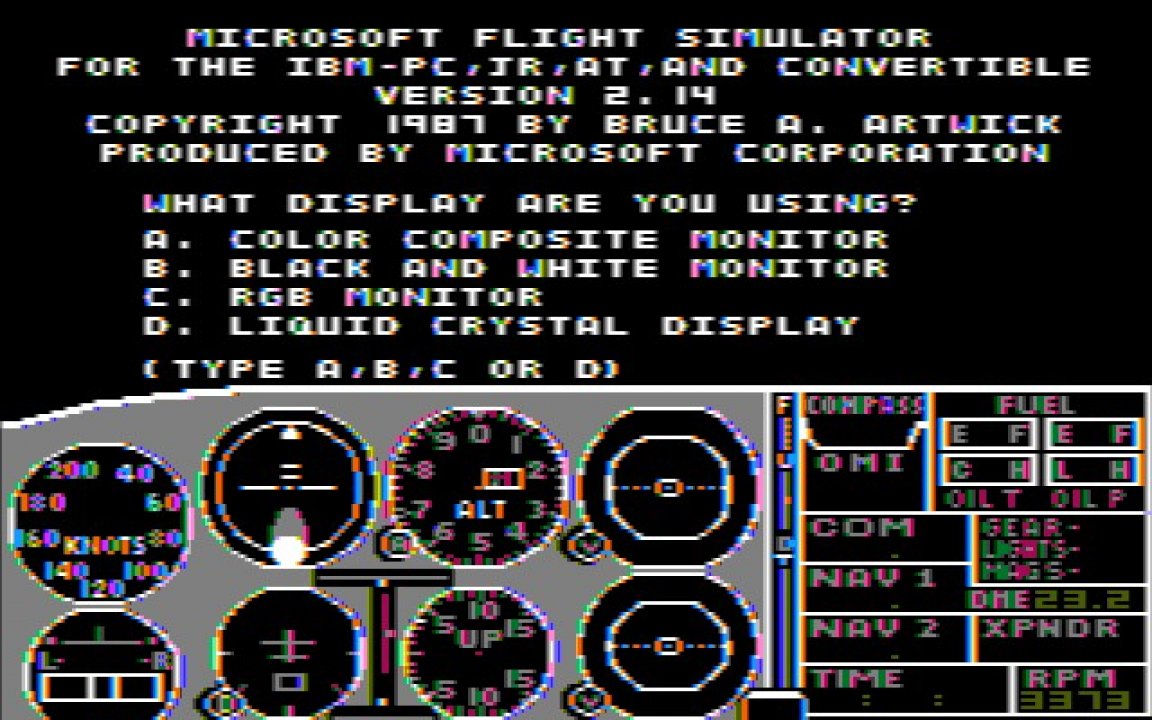

Platform: PC
Region: Region Not Set
Developer(s): Bruce A. Artwick (SubLogic)
Publishers(s): Microsoft Studios
ReleaseDate: 1987-01-01
Players: 1
Co-op: No
Microsoft Flight Simulator 2.14
[Game Manual Introduction] Microsoft Flight Simulator is a second-generation real-time flight simulation program for microcomputers. The simulation considers 35 important aircraft characteristics, and includes an out-of-the-window three-dimensional dynamic flight display, extensive flight controls, and minimum Visual Flight Rule (VFR) and Instrument Flight Rule (IFR) instrumentation as specified by the Federal Aviation Administration (FAA). Unlike first-generation simulators, Flight Simulator features detailed graphics that closely simulate a pilot’s actual perspective. Flight instruments look and behave like the real thing. The “World” is more than 10,000 by 10,000 miles square with a resolution of approximately 2.5 inches. The world encompasses the entire continental United States and extends into Canada, Mexico, and the Caribbean. The “populated” world consists of four areas and includes more than 20 airports detailed in charts at the back of this manual. Winds, Clouds, time of day (for dawn, day, dusk, and night flight), and navigation aids are also included. The added features make the aircraft more difficult to fly than first-generation simulators so as a convenience to new pilots, two distinct flight modes are provided. If you have never flown before, you can use “easy flight mode” to learn the fundamentals of flight control. In easy flight mode, you fly in optimal conditions and use only the primary flight instruments and controls. When you have mastered the basics of flight, or if you are already a seasoned pilot, you can select “reality flight mode” to simulate more sophisticated flight factors. In either mode, you can add environmental conditions, such as wind, time of day, and turbulence. You can also set a reliability factor that determines the frequency with which flight problems arise. You can even set up test situations. Flight Simulator is modelled after the performance characteristics of an aircraft of the Cessna 182 class (single engine, land, with substantial performance). It is an ideal plane for pilot training because it has climb performance and speed that keep a pilot busy, especially on landing approach. The plane is slightly superior to an advanced World War I fighter.
Genre(s): Flight Simulator

